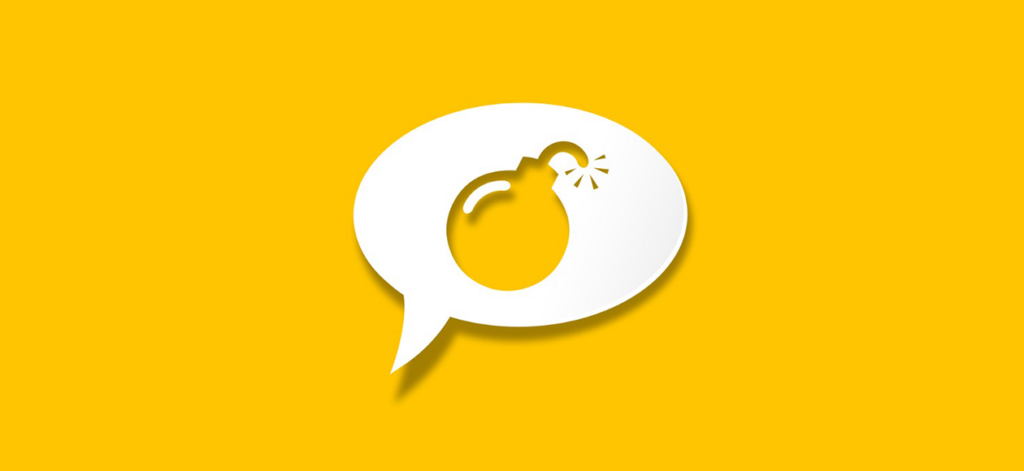One of my most-popular articles about getting clients was wrong. Or at least incomplete. So today, I want to set the record straight about when you should send potential freelance clients samples of your work. And when I think you should ask for permission first.
One of my previous articles explains why you should not email potential clients with samples of your work — unless you have permission first.
This advice flew in the face of the guidance from a lot of other successful freelancers — especially in the copywriting space. (Including my own friend and mentor Stefan Georgi. Sorry man!)
But my argument was that — in almost every situation — there is no downside to asking for permission to send samples first.
Because if you do a good job presenting yourself and your skills in your initial email, then your potential client will want to hear more from you.
And if you offer to send them samples only after you get permission — instead of attaching them immediately — it can indicate you respect their time.
But now I realize this isn’t always the case…
Sometimes, it shows more respect for the potential client to attach the sample right away. (Instead of forcing them to take time to reply to you first.)
So today I want to clarify when I do think you should attach samples immediately.
And when I still think it’s best to ask for permission.

First, I Think You Should Attach Samples To Your Initial Email To A Potential Client In The Following Situations
You’re Replying To A Job Listing
In this case, you know the company is hiring. So don’t waste their time making them reply to ask you for samples. Just send them right away so they have everything they need to evaluate your performance all in one place.
You Know The Potential Client Is Hiring
Even if the client hasn’t posted a specific job listing, if you know or suspect they are hiring, attaching samples is probably best.
You Can Link To Your Samples Using Live Websites
If your samples are links to live websites and not file attachments, then I would error on the side of including them.
Clicking a link is much easier for the potential client. Since some email platforms provide a really clunky experience for opening attachments.
Depending on the email platform, clicking the file attachment will download it to the potential client’s device. Then they have to find it. Then open it. Then read it. Then remember to delete it later. Plus the attachment is still taking up space in their inbox…
It can be a bit of a mess.
But if you can just give them a few links to click, it makes their lives way easier. (Plus it also helps establish your credibility — since you’re showing that your work is actually in use by other companies and helping them have success.)

However, I Still Think You Should Not Send Samples — And Instead Ask For Permission — In These Situations
(And to be clear — based on the advice above — you would almost always include samples if you’re linking to an existing website. So all of these scenarios assume you will instead be attaching files as your samples.)
You’re Emailing A Cold Potential Client You’re Not Sure Is Hiring
If you don’t know the potential client is hiring, sending them samples as attachments might come off as pushy or presumptuous. So I would err on the side of getting permission first.
You’re Planning To Create A Custom Sample For The Potential Client
One of the best ways to stand out early in your freelance career — before you have a large portfolio — is to create custom samples for potential clients.
So if you’re an email copywriter, that would mean writing a custom email for that company. Or if you’re a designer, it could mean creating sample thumbnail graphics for one of the company’s YouTube videos.
The problem is that it can take a decent amount of time to do this for every client. So the last thing you want to do is labor for hours over a custom sample…
And then the potential client never even opens your email.
So for your own sake, I would try to get permission from the potential client before you invest a ton of time and energy to create a custom sample. Since once the potential client has asked for the sample, there’s a much better chance they will actually look at it when it’s ready.
(Just be careful you don’t mislead them and make it sound like you’ve already written the sample when you first reach out. I talk more about how to strike that balance in the original article.)
When You Are Asking The Client To Use The Sample — Not Just Demonstrating Your Skillset
Sometimes, freelancers will present a custom sample or free deliverable to a potential client. But then they will say something like:
“You’re welcome to use this — and if it performs well, I’d love to talk about working together more in the future.”
The problem is, asking the potential client to implement the sample is a MUCH bigger request than simply using it to demonstrate your skills.
And this is actually the main scenario that I was thinking about when I wrote the original article.
I even mentioned that sending a free sample means the potential client has to:
“…decide [how and where the project fits the current roadmap for their business]…pull their team away from other assignments to implement your sample if they like it…keep track of the results…and a bunch more stuff that I’m probably missing.”
Now like I said, all that stuff does not apply if you’re just sending a few links for them to check out. Or even attaching a few documents that they can skim.
But as soon as you ask the potential client not just to review — but also to use — your samples, you’re placing a much bigger demand on them.
And that’s why I would definitely make sure you get permission to send your samples before you expect the client to put in all that additional work to implement your sample.

So I Hope That Helps To Clear Up When It’s A Good Idea To Send Your Potential Clients Samples — And When You Should Ask For Permission First
And hopefully it also helps reconcile the “beef” I had with Stefan about this particular topic.
(I’m kidding — he’s never called me out or anything like that. In fact, I can’t remember that we ever talked about it at all.)
Now Let Me Show You How To Make Freelance Clients Come To You — Like Clockwork — Using A Simple, 30-Second Conversation…
All the details are inside my free business blueprint 30-Second Referrals.
With this free PDF, you’ll discover how to use a simple, 30-second conversation to get two referrals from every single client you sign. (I’ll even show you exactly what to say during this conversation with my word-for-word script on page 13.)
That way, you can make clients come to you like clockwork. And you can fill your pipeline with more new business than you can handle.
But there is a small catch…
30-Second Referrals is only available to members The Freelance Like A Pro email list.
So enter your best real email below to join us and claim your free copy of 30-Second Referrals now. (And you’ll get my members-only emails to help you run a more profitable and stress-free freelance business, too.)
Enter your first name & best real email (no aliases)
 100% Secure. No Spam.
100% Secure. No Spam.

Thanks for the freelancing guide and the emails that you've been sending out — the 30-second referral method is so stupidly simple, that it's genius!
Connor Inch, Freelance Copywriter

